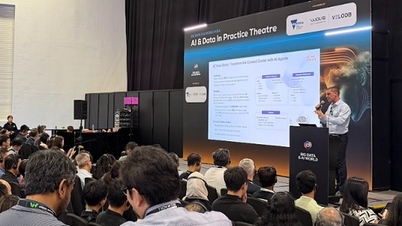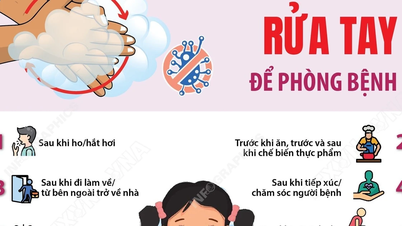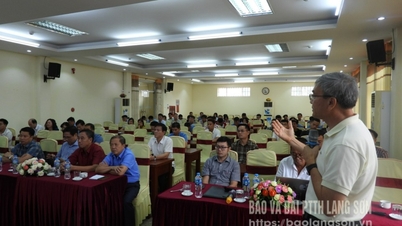At the International Conference on Infection Control 2025, held on October 14, Dr. Phung Manh Thang, Head of the Infection Control Department, Cho Ray Hospital, said that this place currently centrally manages 450 sets of sterile instruments (nearly 13,900 types) used in care and treatment of the entire hospital.
According to Dr. Thang, cleaning is an important step to remove clinical dirt and microorganisms, which lays the foundation for the following disinfection or sterilization steps. In the decontamination area, there must be enough space for suction machines, drying tools, a standard water treatment system and space for recording documents.
Doctors will evaluate the cleaning quality through the naked eye, endoscope, indicator or ATP (energy molecules on the surface of the instrument). After sterilization and cleanliness testing, the instruments will be stored and controlled, quality managed by strict procedures.

After sterilization, the instruments will be stored to ensure quality (Photo: Provided by the hospital).
Over the years, Cho Ray Hospital has applied information technology to the management of sterilization instruments in all steps, including: Receiving orders and issuing; checking order requests; preparing instrument sets; scanning barcodes for sterilization and storage.
Barcode management helps doctors retrieve accurate instruments, respond to instrument information quickly, accurately track instrument location and time, and easily plan statistics and forecast.
Recently, Cho Ray Hospital continues to apply AI in instrument management.
Specifically, to comply with hygiene and disinfection, the unit uses a computer vision system and RFID (radio frequency identification technology) integrated with AI to monitor the disinfection process, verifying that instruments have been cleaned and stored properly. AI also helps reduce the risk of hospital-acquired infections.
Not stopping there, AI algorithms support data analysis such as surgical history, surgical schedules, equipment usage trends to forecast demand, etc. This benefit is applied by the Infection Control Department to manage inventory and ensure instrument availability.

The application brings many benefits in infection control management at Cho Ray Hospital (Photo: BV).
In addition, AI also helps monitor and optimize tool usage, detect errors, and control quality in a timely manner.
Dr. Phung Manh Thang commented that the development of many modern surgical techniques is accompanied by increasingly complex instruments. Meanwhile, human resources to handle instruments are limited.
Therefore, the trend of applying digitalization and AI to instrument management will help optimize the use of instruments for hospitals, as well as ensure safety and efficiency for medical staff.
Speaking at the opening of the conference, Dr. Pham Thanh Viet, Deputy Executive Director of Cho Ray Hospital, said that infection control is a silent job but plays a very key role in the hospital, because it is related to treatment results, hospital stay time, treatment costs, patient complications during hospitalization, etc.
If this problem is not well controlled, it will affect the surgery and the overall treatment situation. In reality, there are still medical facilities that do not pay close attention to infection control...
Therefore, it is necessary to organize an international conference with many reports and new knowledge from experts in infection control management, such as the application of AI, digitalization, etc.
"Hopefully, knowledge of infection control will be spread and implemented in hospitals, so that patient health care will be increasingly improved," said Dr. Pham Thanh Viet.
Source: https://dantri.com.vn/suc-khoe/benh-vien-cho-ray-dua-ai-vao-viec-kiem-soat-nhiem-khuan-ket-qua-ra-sao-20251014170046348.htm



































![[Photo] Ready for the 2025 Fall Fair](https://vphoto.vietnam.vn/thumb/1200x675/vietnam/resource/IMAGE/2025/10/14/1760456672454_ndo_br_chi-9796-jpg.webp)













































































Comment (0)